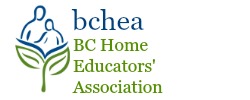University Admissions
The Back Door to University Admissions
One of the things we have learned, over our 14 years as registered home learners in BC, is that there are many different ways to establish the ways in which home learners are “qualified” to take up “non-home” learning.
One example is learning to drive. There are many different ways. But in BC they all start at the same point. Read the book. Go to the ICBC Centre. Take the test. Pass it. Get an L magnet for your vehicle. Get a licensed driver to drive with you. Start driving.
If one asks a school principal how one can get into university, my observation is that you pretty much always get the same answer. Get your Dogwood. Apply to university through the admissions department. Hope and pray your marks are high enough.
Registered home learners who eschew the Dogwood are still a tiny, tiny group of students. But they do exist. Do they ever go on to higher learning? Yes, they do.
Two of my sons (out of the three who have now attended University of Victoria) started at age 16. Not full time. No, they wanted to take a particular course, and asked the professor if he would allow them in the class. After talking to them to establish that they had the background, he consented.
Then begins the admission process for an “accelerated student.”
Both my sons have had a particular passion, and both started out in the same class. Both did the same preparation to get in–preparing for, taking, and passing the College Board Advanced Placement Exam in Music Theory. (College Board is the American organization that runs the SAT exams in the United States. They also run the Advanced Placement [AP] program that allows students to take exams for “advanced placement” in or credit for university courses. University of Victoria allows credit with a high enough score on the exams.)
But to enroll in UVic as an “accelerated student,” you begin, as I said, with permission from the professor, who then requests permission from the department. The department decides if there is room in the course. If so, they tell admissions they have room, and have granted the student permission. The student then must provide certain information to admissions. They tell you they need a letter of recommendation from the student’s principal and high school transcripts, as well as a letter from the student saying why they wish to take the course. What they will accept is a letter of recommendation from an appropriate adult (like a music teacher), other test scores, if available (like AP, SAT or provincial exams), a resume outlining the student’s experiences that have prepared them for university-level work, and this class, and, of course, the letter from the student saying why they wish to take the class.
Now, the interesting thing about this is that once you have established that you can do university-level work, and take a course (or two or three), one at a time, suddenly, if you wish to attend the university full time, you do not have to apply for ADMISSION! No! You’ve already been admitted. Now, you simply apply to have your status changed from part-time to full-time. With good marks, it usually isn’t a problem.
So that’s our back-door way to university. And an extremely effective one at that. My oldest son, who entered the normal way, being admitted at 18, through the application process, with test scores, auditions, etc. (but no Dogwood or high school credentials, save one Math 12 mark), was graduated in April. Second son, who entered as an accelerated student, finishes in December. Son three, age 16, had his first class as an accelerated student yesterday morning. He is very pumped–this is a class he really wants to take, in a field he is passionate about.
And that, my friends, is the recipe for academic success.
by Kelly Green
